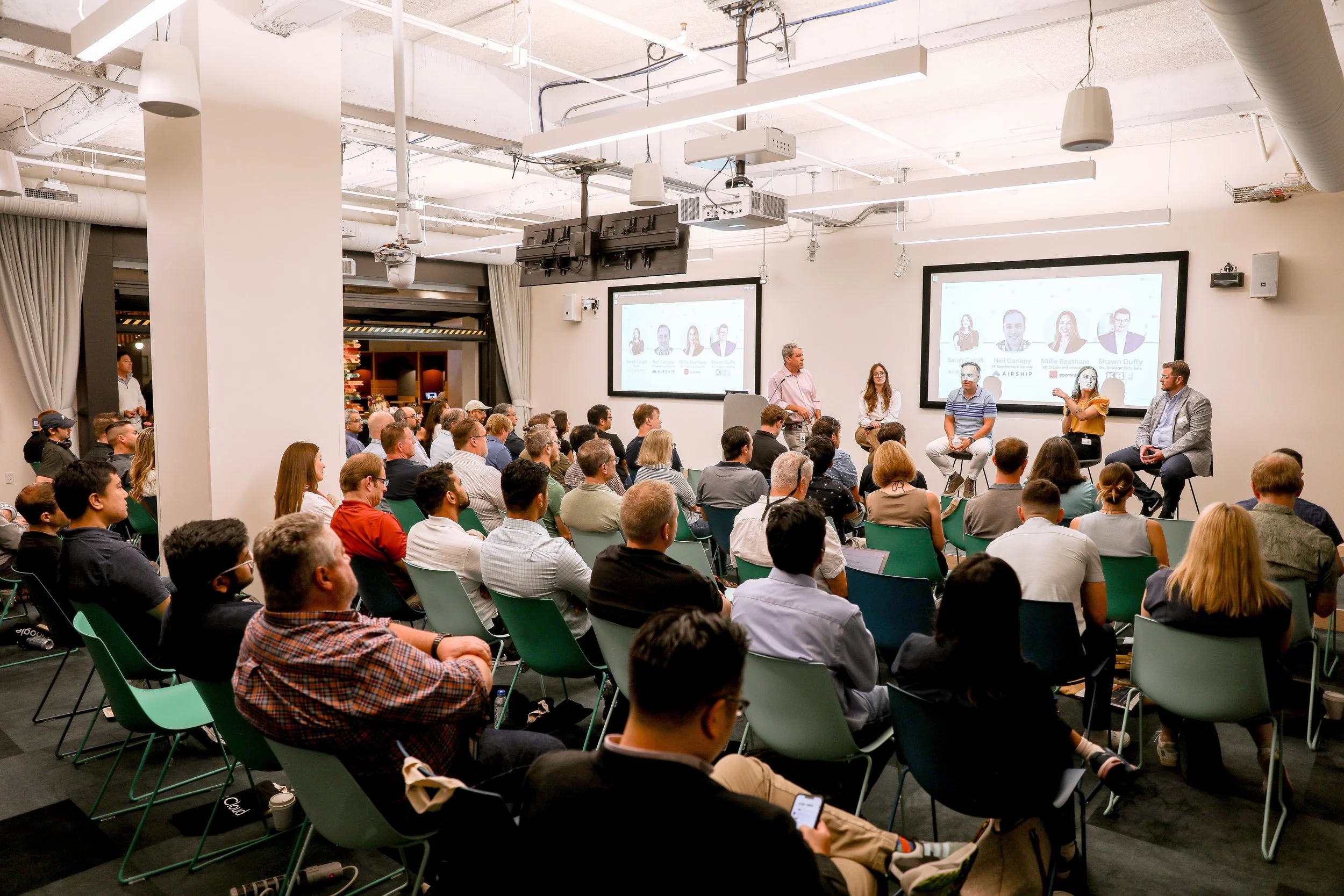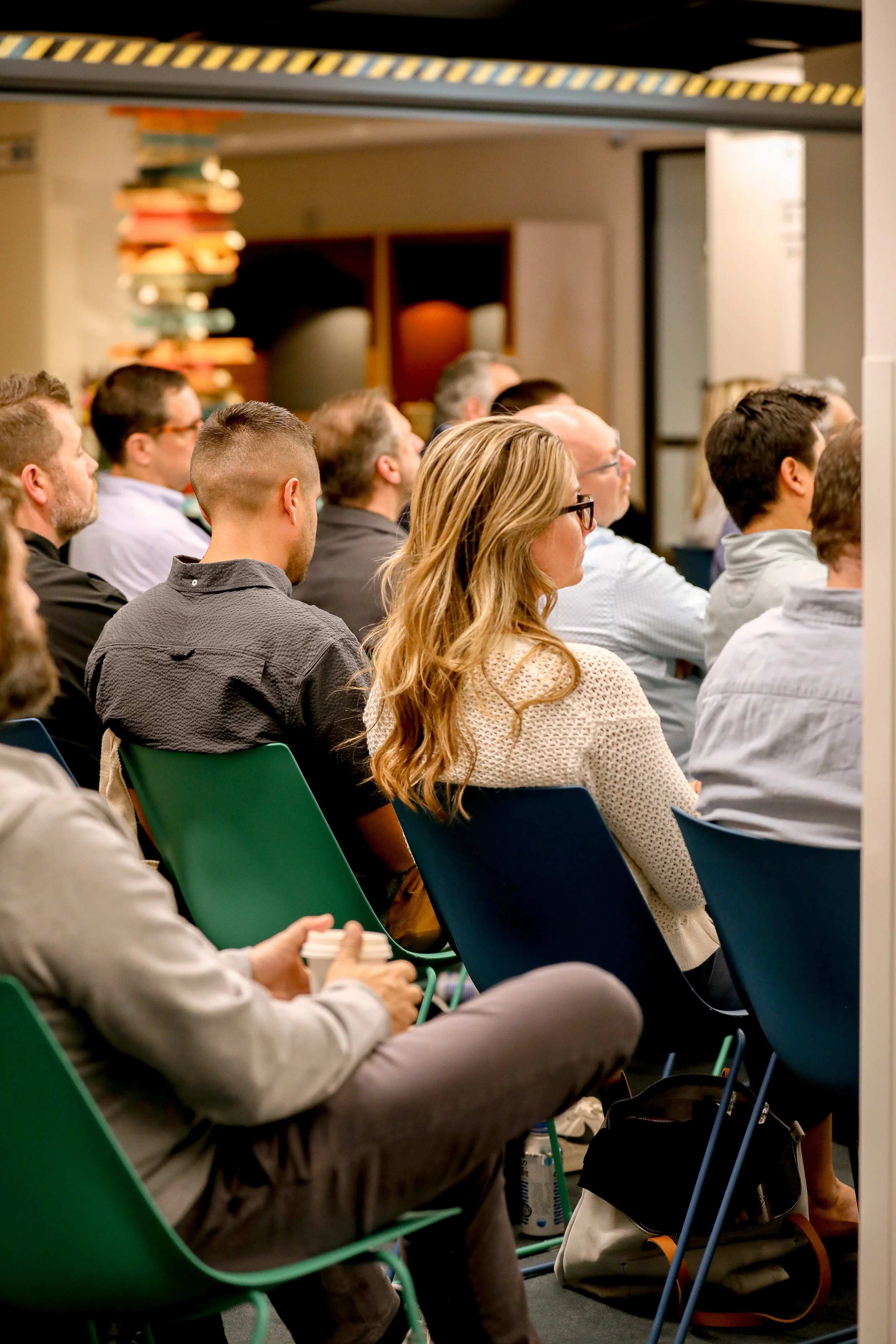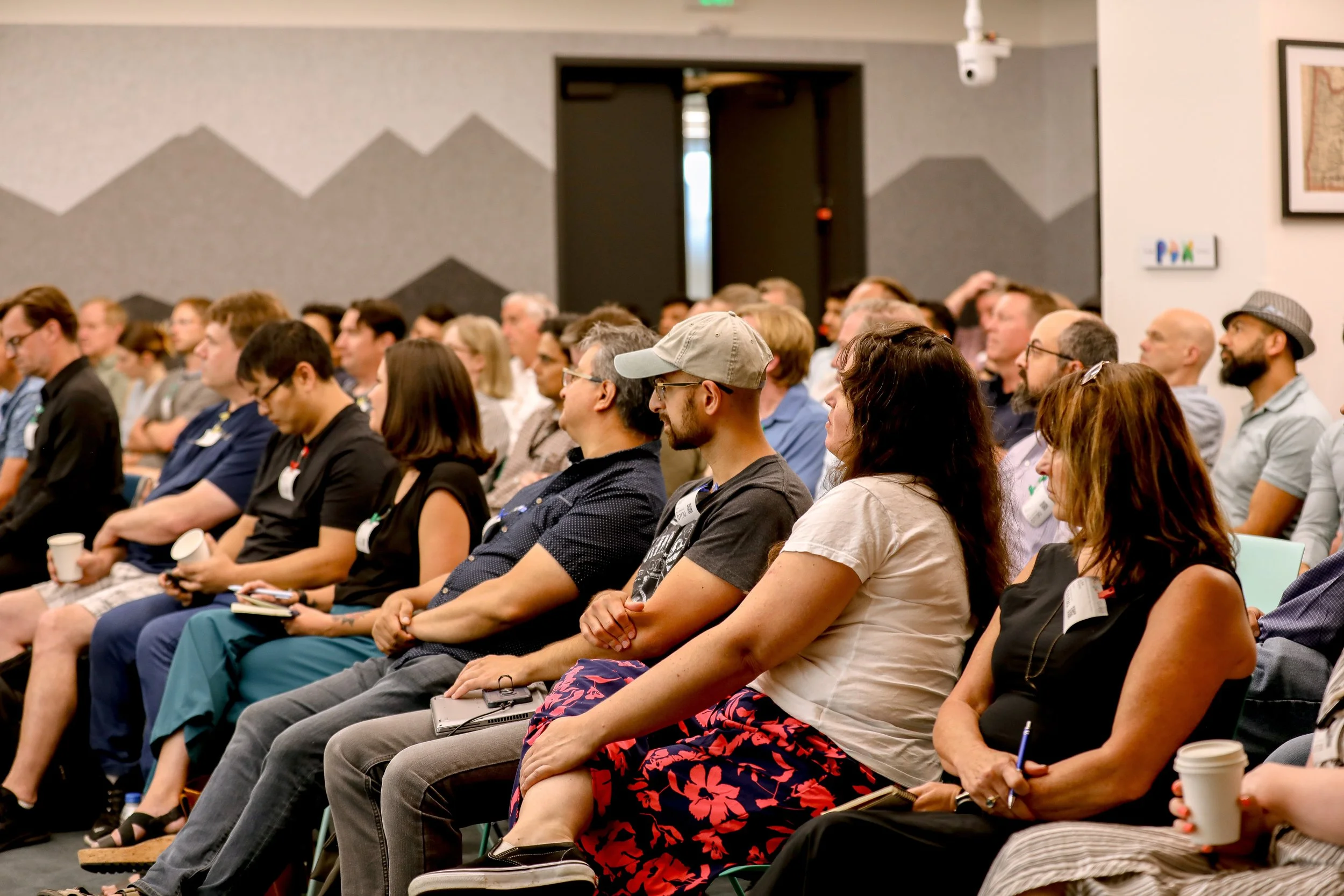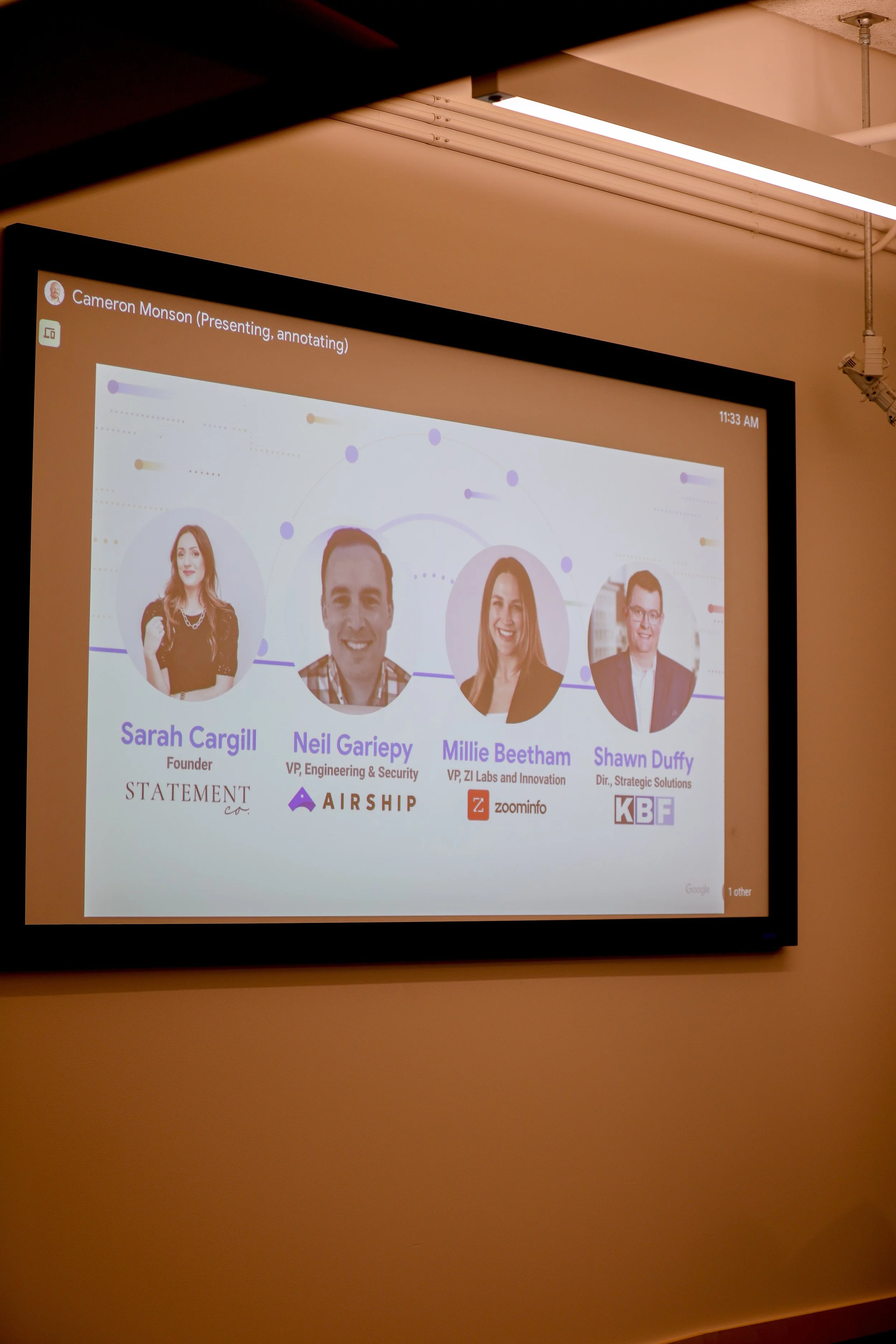From Google's Panel: Solving Human-Centric Problems With AI
This week Statement Co. was invited to join a Customer Panel at Google Portland on “Drive Innovation with Analytics and AI: Built on BigQuery & Gemini.”
The panel was moderated by Ryan Hildenbrand, Analytics and AI/ML Executive at Google, and joined by Millie Beetham, VP of GTM Strategy at ZoomInfo; Neil Gariepy, VP of Engineering at Airship; and Shawn Duffy, Director of Strategic Solutions at KBF.
Our approximately 100 attendees ranged from data scientists and engineers to business leaders and change agents. The content was about turning AI hype into reality by meeting everyone where they may be on the journey to literacy.
Some of the big takeaways we heard from the audience included:
We need to spend more time returning to the human-centric problem statement before jumping to data, solutions, and builds.
We need to remember how to humanize these technologies so that it’s about enabling speed, efficiency, and accuracy around what makes our brands great in the marketplace.
Now is the time to clean up the foundation of data governance, structure, and practices so that businesses can gain the full benefits of AI implementations.
Our change agents—those who drive change adoption and lead culture—need to be operating ahead of the learning curve around AI literacy.
Diving a little deeper, here was our Statement Co. take on some of the panel Q&A:
Q: Could each of you share the overarching strategic vision for how analytics and AI are driving innovation within your respective organizations?
Total AI domination. I’m kidding.
Our vision at Statement Co. is that analytics and AI helps us accelerate the mundane with greater accuracy so that we can spend more time on creative, innovative, higher-level thinking as we consult with clients.
Q: What are the key business objectives you aim to achieve with these technologies?
We look at objectives from two perspectives: with our clients and with ourselves.
With clients, we want to unlock meaningful innovation faster driven by data and empowered by AI. We want the story headlines in the coming months to be that these technological advancements helped us connect more meaningfully as humans in the work we do.
With ourselves, we want to get faster and more accurate as consultants in the grunt work so that we can be heads up engaging in real life around the tougher parts of transformation, which tends to be the creative problem solving around integration and storytelling around change adoption.
Q: How do you prioritize which analytics and AI/ML projects to pursue, especially given the vast possibilities?
This is a great question because too many companies have an AI hammer and are looking for a nail right now. Instead, we need to ask first, “where does the human need to be in the AI equation?”
Last year I led a workshop for a team of cross-functional executives at an identity management company in DC to identify where AI can have the greatest impact for their business.
We started with empathy maps of their customers and frontline workers, identifying the pain points along the value stream. From there we asked, “what needs to remain human to uphold our brand experience and what repeatable tasks or processes can be AI enabled to drive efficiency?”
So, we look for the intersection of pain points and repeatability mapped back to objectives and key results (OKRs) to prioritize hyperautomation use cases.
Q: What's your framework for identifying high-impact opportunities that align with your core business goals?
I’m a consultant. So, you had me at “framework.”
If an organization is unclear on their direction, we might start with some strategic visioning work.
If a strategy is in place, we might make it more targeted with OKRs.
If they don’t know the current pain points, we might do an empathy map.
If they already have use cases, we might map those on an impact / effort matrix.
If they have processes mapped, we might identify the ones that are the greatest time savers and the most repeatable for AI applications.
If they have competing priorities across different functions, we might define an enterprise prioritization criteria.
The best framework meets a team where they are.
Q: Looking at your respective industries, how do you see AI and advanced analytics reshaping the competitive landscape in the next 3-5 years?
I had a few “ahas” on this recently.
A nonprofit client asked us how we would go about creating an end-to-end process for their volunteers. I started off by rattling off all the common consulting activities like mapping their value stream, developing templates and tools, the whole works.
And then I paused and said, “let’s try Gemini.” Within five minutes we had mapped out what would have normally taken a team a couple weeks to do. I had at least four big takeaways from this.
One, AI is going to change the role of the consultant. We are going to become architects of prompts and curators of outputs. We’ll need to know how to architect a suite of AI solutions that get great results when analyzing data, drafting materials, or engineering products.
Two, we all need to get amazing at prompt engineering. AI is going to highlight where some of us may struggle with using language to communicate a vision, delegate a task, or articulate what we want to see as an end result. If most of our AI is directed conversationally, we have to get better at conversation.
Three, we need to be really intentional about where to put AI in our business processes. Just because we can send an bot to a meeting, run a recruiting interview with AI, or make a concert ticket purchase with agents, doesn’t mean we should. We need to consider all the consumer experience, security, strategic, and equity implications of this so that we are enhancing experience, efficiency, and growth – and not just cutting corners.
Four, critical thinking will be even more critical. We’re going to need humans grounded in knowledge, facts, and critical thinking skills to know when AI is hallucinating so that we’re steering toward greater accuracy. This is one part education and another part quality and ethics.
Q: What emerging trends are you most closely watching and preparing for?
You may have all seen the viral graphic on LinkedIn highlighting the skills for 2030 or the Microsoft report on how jobs will be affected by AI.
We’re closely watching the ways we can be adaptive to the changing landscape: educating ourselves and our clients on the best way to leverage these technologies to be effective while leaning into the skills that will make the difference such as creative problems solving and high-EQ leadership.
We also continue to test creative tools to evaluate effectiveness for real-world, practical application in our service offerings.
Q: Which industries are leading the charge with AI?
I don’t think I could rank all the industries by AI maturity.
Instead we’re seeing growth in pockets of leaders, teams, and organizations across every industry.
Everyone is at a different point in the adoption journey.
While the consumer experience in financial services may be behind, fraud detection, security, and the speed of trade are not.
While sales and marketing obsesses the data and performance of their content, they may not be using some of the higher level technologies around agents.
Some companies are trying to modernize like a digital native and digital natives are trying to modernize like an AI-driven brand.
There’s still a great deal of opportunity for everyone to jump in.
Q: What's one area within AI/ML that you believe is currently underestimated but holds immense potential for future innovation and competitive advantage?
I have two examples among many generative AI applications that will start to see accelerated growth as hardware catches up.
One, computer vision or the ability to analyze video and images the way a human does.
In fact, a dentist shared this weekend that he wishes AI could view his appointment recordings and x-rays to jumpstart treatment plans he can modify. Or, an angel investor friend said he wishes AI could Face-Time with him to troubleshoot a shower leak before he spends time and money on contractors.
The other, closer to home, I have a friend and client running an AI startup called StrateSea Technology. They are going to radically transform how the sea floor is scanned and analyzed for technologies like wind power, Naval operations, and the Internet. It’s going to cut the time, labor, and cost of surveying the sea floor in a way that will drastically change ocean industries.
And yet, many investors told them the blue economy wasn’t a big enough value proposition. I’d bet they’re wrong.
Q: Implementing AI/ML requires significant organizational change. How are you fostering a data-driven culture and building the necessary skills and capabilities within your teams to truly leverage these technologies?
I love this question because there’s so much more to it than giving employees a chatbot to play with and making AI usage part of a performance review.
I’ve learned this lesson the hard way doing things like scaling an 80-person, global team to run a large-scale data remediation at a major retailer.
Culture isn’t a silver bullet. Rather, it’s a concert of several practices working together in a cohesive story to drive behavior change.
It’s workshops to teach product managers to drive product decisions with data insights.
It’s standing up centers of excellence that can establish the capabilities, competencies, and roles for the future.
It’s creating policies that don’t limit the usage of tools, but steer them safely and ethically.
It’s creating capacity for teams to test out new ways analyzing, working, and delivering.
HP is doing a great job talking about this when looking at how to use AI in an inclusive way for hybrid workplace collaboration.
Q: Data governance, ethics, and responsible AI are increasingly important. How is your organization addressing these concerns, particularly regarding data privacy, fairness, and transparency in your AI applications?
I think it’s important we consider all the ways AI can go wrong — to steer it for good.
As consultants we’re always looking out for potholes ahead and thinking about what to do if we hit one.
There’s already been some instances that have made headlines such as mental health crises after chatbot engagement or Disney developers getting hacked from GitHub AI tools that should cause us all to pause and think about how we’re steering these solutions ethically.
We’re talking to clients about establishing AI policies, standards, and best practices around everything from data governance to ethical application internally and with their procured vendors.
AI isn’t going to fix bad processes, clean up bad data, or make fairness decisions without us setting that foundation — and we have a responsibility to do so.
Without sounding like an ad, we’re staying close to Google on this. We trust that their enterprise tools are leading in data protection, security, and ethics.
Q: What's the most critical success factor you've identified when it comes to moving an AI/ML project from proof-of-concept to production and achieving real, sustained Business impact?
One? That’s too hard. I can think of two.
The most obvious one is: do we have a clear problem we’re solving or do we have a solution looking for a problem?
The second is: Have we told a compelling story around the problem and solution that has all the humans bought in?
Years ago, Ryan and I stood up a big innovation lab with multiple technologies at a retail customer where we built a super cool outlet site to help the brand sell off excess inventory without diminishing the brand value. Think Nordstrom Rack or Nike Factory Store.
It was a good idea to solve a real problem in a compelling way. And yet it died before launch because all of the leaders across the organization were not sold in on the story.
I think the sell-in with all of your stakeholders will remain the hard work of moving transformations forward even with AI.
Q: To wrap up, what are you personally most excited about regarding the future possibilities that analytics and AI will unlock for your business, your industry, and even society at large?
There’s a ton to look forward to with these advancements:
Being able to do more, faster to be able to enjoy more face time with clients.
Being able to bring solutions to nonprofits, startups, and small businesses that were previously just out of reach.
Being able to test our own wacky innovation ideas without major capital.
All of that is really exciting.
Q: Did you use AI to prepare for this panel discussion?
Is this when we tell the world that Google launched its first sentient being, “Sar-AI?” I’m kidding. Yes, of course I asked AI if all my answers made me sound clever.
Big thanks for having us, Ryan and Google!
Statement Co. offers support helping clients prepare strategically for an AI future through use case identification and prioritization workshops, developing centers of excellence and innovation labs, supporting change adoption of new technologies, and more. If you’re interested in support, get in touch at hello@statementco.io.
Photography by Jenn Pacurar at Spotted Stills. Statement Co.llab Contributions included Victoria Price-Doucet and Dr. Jess Heaton.











